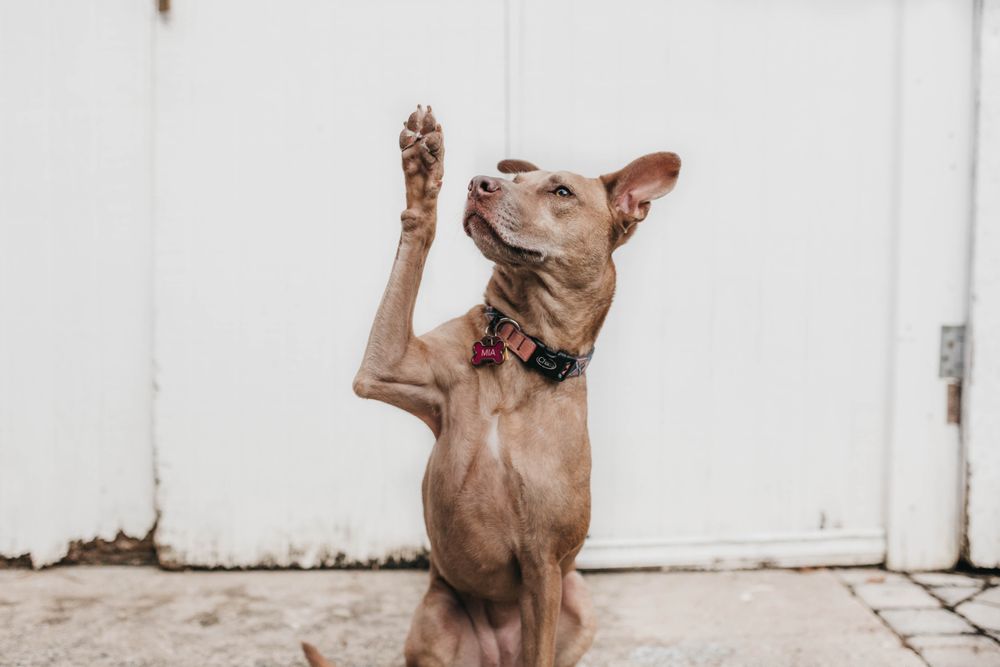Anxiety, specifically separation anxiety, is one of the most common behavioral challenges among dogs, especially rescue dogs. To help you understand dogs with separation anxiety, and help them feel better, this article will review:
- The definition and signs of separation anxiety
- How you can help your dog overcome their separation anxiety
- What other pet parents are asking about separation anxiety
What is Separation Anxiety?
Anxiety is defined as the anticipation of a threatening event. Dogs with separation anxiety will become anxious or distressed when you leave them, or are about to leave them, alone. For example, if your dog begins to pant and pace as you get ready for work in the morning, they are likely becoming anxious at the signs of your departure.
What Are the Signs of Separation Anxiety?
Depending on your dog, signs of separation anxiety may include:
- Barking or howling when you leave the house or go into another room.
- Urinating or defecating in the house when left alone.
- Chewing, digging and other forms of destruction when left alone.
- Following you from room to room when you are walking around the house.
- Trying to escape when left alone or separated from you.
- Pacing back and forth in circular patterns, or back and forth, when left alone.
How Can You Help Your Dog to Overcome Separation Anxiety?
To help alleviate your dog’s anxiety, there are a few things you can do:
- Create a predictable schedule. This includes feeding, walking, and playing with your dog at the same times each day. This will help your dog feel better about their home environment and bring down their general anxiety.
- Counter conditioning your dog to feel differently about your departure. In other words, instead of associating your departure with feelings of panic, you want them to associate your departure with good things, like delicious treats. To do this, provide your dog with a work to eat toy (like a Fun feeder, KONG classic toy or Toppl) every time you leave.
- Introduce dog appeasing pheromone (DAP) products to fight anxiety. DAP products emit the same pheromone that is present in a mother dog's milk and can calm and soothe both puppies and adult dogs. A DAP heat-activated pheromone collar combined with at least one natural supplement like Solliquin, Zylkene or Quiet Moments can help ease your dog’s anxiety. Other natural stress reducers include the DAP wall diffuser plugin, which you can plug in to a wall outlet close to where your dog spends the most amount of time.
- Consider hiring a Certified Separation Anxiety Trainer (CSAT). These trainers specialize in helping dogs with separation anxiety. To find a trainer near you, ask your veterinarian.
Note: It’s important that you don’t try and train your dog when they’re in peak-anxiety mode. If your dog is anxious and afraid, they won’t be absorbing any of the training. We suggest creating a log so that you can start to recognize signs your dog is feeling high and low stress levels, and then using those lower stress level times to work with your dog.

Frequently Asked Questions About Separation Anxiety in Dogs
Do rescue dogs grow out of separation anxiety?
Your dog’s separation anxiety isn’t something they can control, but if you stay patient and work at your dog’s speed, their comfort with being alone will increase and their separation anxiety will decrease.
How can I make my rescue dog less anxious?
To help your dog feel less anxious, try these tips next time you leave your dog alone:
- Every time you leave the house, offer your dog something awesome. Work-to-eat toys are popular with Petcademy dogs. The reason this strategy is effective is because your dog will be focused on getting their food out of the bowl or toy and less on your departure.
- Build endurance slowly. Leave for short periods of time. You want to return before your dog is at all upset. Over time, you want to stretch how long you can leave your dog before they start to feel anxious.
- Get a white noise machine. Using a white noise machine will help dim the kinds of noises your dog isn’t used to while you’re away. If you don’t want to buy one, leave music on for your dog to help drown out the outside noise.
- Consider crate training. Some dogs find it very calming to be isolated in a crate when their mom or dad leaves. This is something you will need to determine slowly. If your dog shows signs of distress when being crated, crate confinement probably isn’t the best option. Instead, try confining your dog to an area using a baby gate.
- Never scold your dog. Your dog’s separation anxiety isn’t something they can control and, if you punish them for expressing their anxiety, you could exacerbate the situation.




